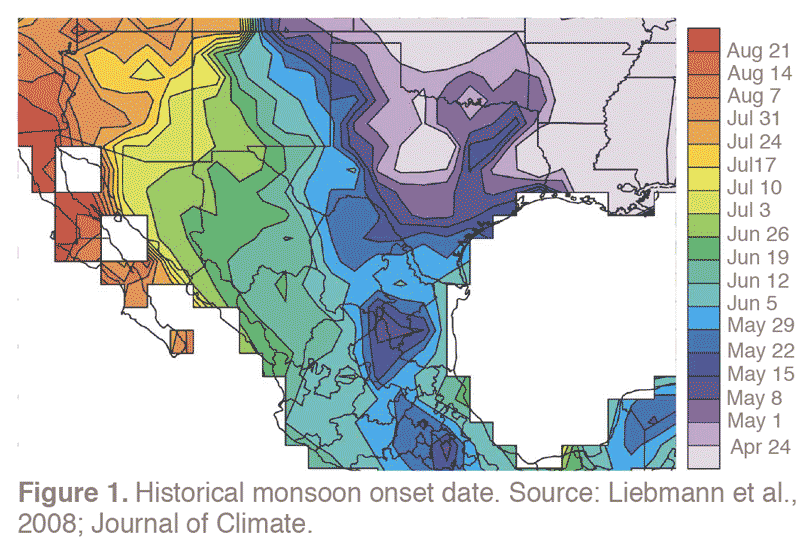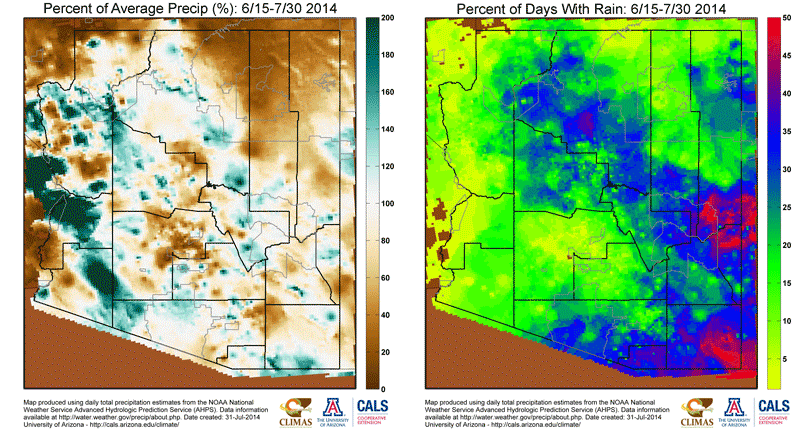Notes from an Applied Climatologist: Monsoon & El Niño Q&A
Is the strong start to the monsoon related to El Niño?
 In short? Probably not. Research on the interactions between El Niño events and the North American Monsoon System actually suggests the opposite, with past El Niño events slowing the onset of monsoon precipitation across the Southwest U.S.
In short? Probably not. Research on the interactions between El Niño events and the North American Monsoon System actually suggests the opposite, with past El Niño events slowing the onset of monsoon precipitation across the Southwest U.S.

This year, when compared to records of average dewpoints across Arizona and New Mexico, the monsoon moved in right on time. It was ushered in by surges of moisture that moved up the Gulf of California into the desert Southwest, several of which were triggered by tropical storms and hurricanes in the eastern Pacific that flourished in highly favorable conditions, including light upper level winds and very warm ocean water. These conditions are not necessarily related to El Niño, as conditions that favor an El Niño event have largely been absent in the atmosphere, with only glimmers of a favorable pattern in the sea surface temperatures across the eastern Pacific Ocean. The fact that the current El Niño has been struggling to form may also be the reason we had a relatively "normal" start to the monsoon.
 More precipitation maps at http://cals.arizona.edu/climate/misc/monsoon/az_monsoon.html
More precipitation maps at http://cals.arizona.edu/climate/misc/monsoon/az_monsoon.html
What can we expect from the monsoon (in AZ & NM) with El Niño waiting in the wings?
Research on the interactions between El Niño and the North American Monsoon System suggest that the impact of El Niño is largely observed early in the season, primarily in the months of June and July. This means that even with an El Niño (probably) forming later this summer, its direct impact on the monsoon will likely be minimal.
An indirect effect continues to be the very favorable tropical storm and hurricane conditions in the eastern Pacific related in part to the struggling El Niño event. With more tropical storm activity in the eastern Pacific there is an elevated chance that one of these storms will curve back to the east and visit the Southwest, especially later in August and September. Some of the floods of record across Arizona and New Mexico are related to late monsoon season tropical storms curving back through the Southwest.
Michael Crimmins is an Associate Professor and Climate Science Extension Specialist in the Department of Soil, Water and Environmental Science

